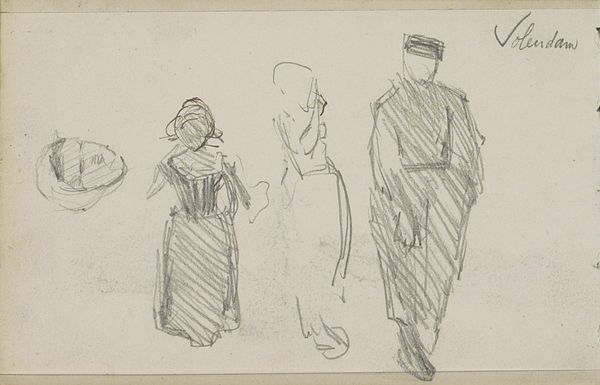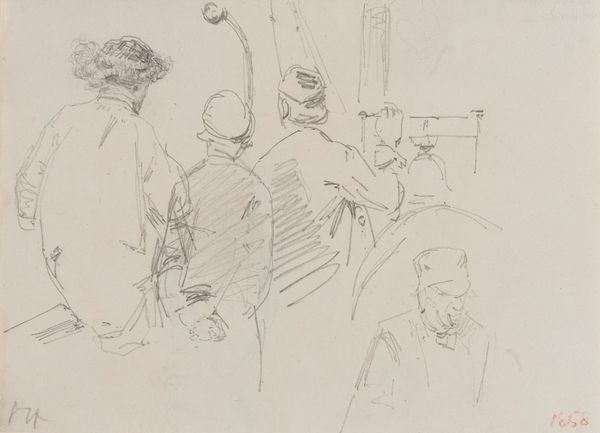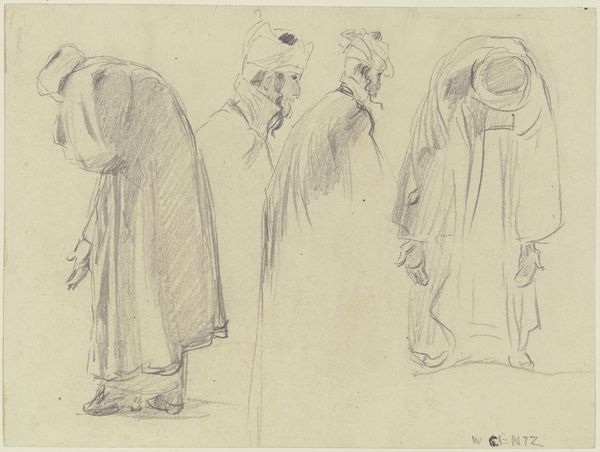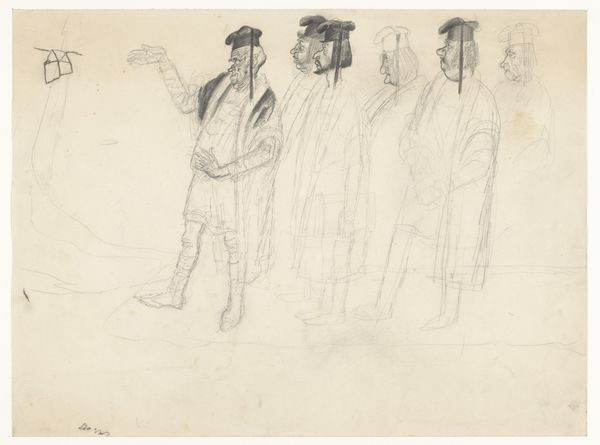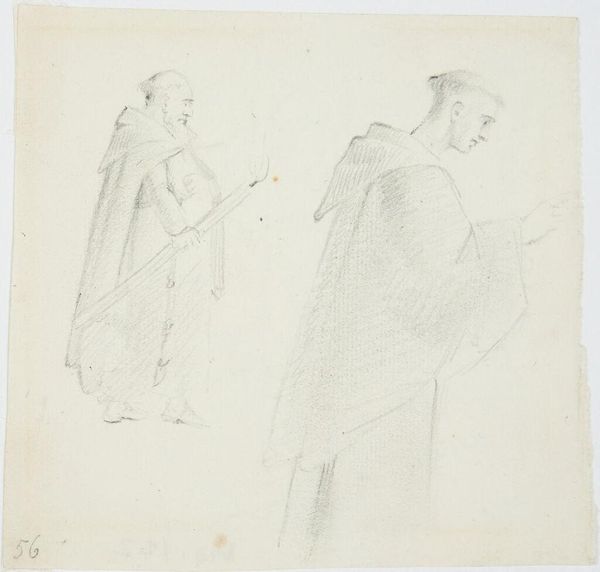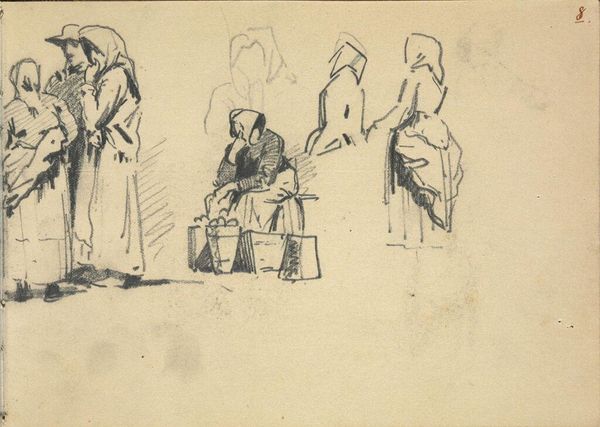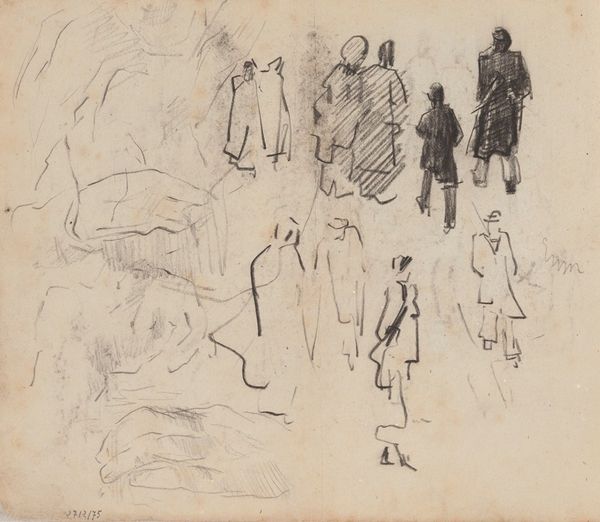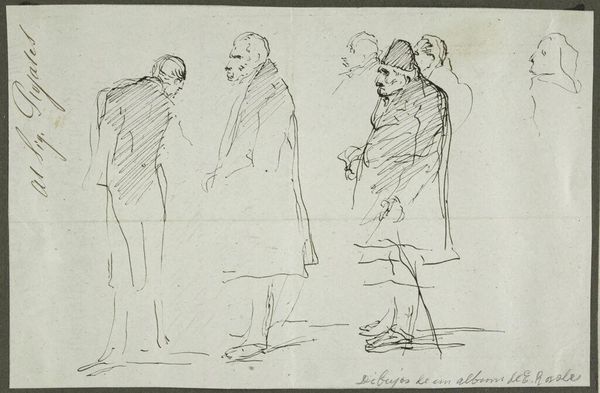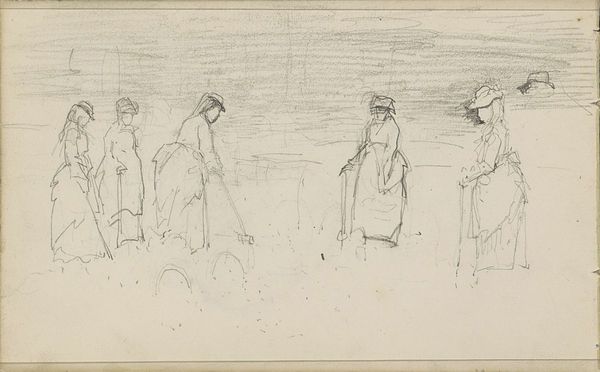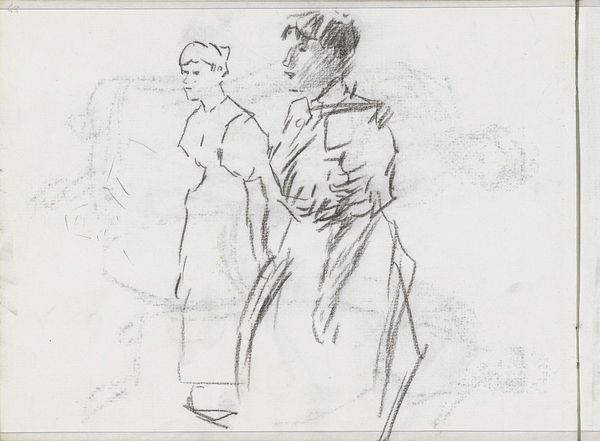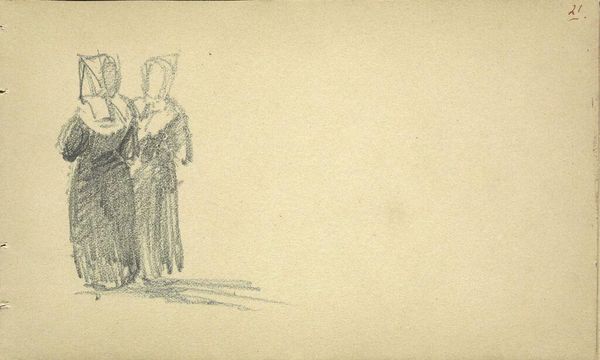
Dimensions: height 192 mm, width 116 mm
Copyright: Rijks Museum: Open Domain
Curator: We’re looking at George Hendrik Breitner’s “Vier figuurstudies,” created sometime between 1880 and 1923. It’s a pencil drawing on paper. Editor: Sparse. A bit stark, almost melancholy. There’s a rawness to it—four figures rendered with such economical lines. Curator: Indeed. Notice how Breitner employs line not merely to define the figures but to suggest volume and texture. It’s fascinating to observe the interplay of positive and negative space in this composition. He doesn’t describe so much as he suggests. Editor: And I’m drawn to the immediacy, the almost frantic quality of the marks. The paper seems inexpensive. I wonder what sort of drawing Breitner would have been making—practice? Studies toward something more monumental? The swiftness reads as very practical to me. Curator: Given Breitner’s known fascination with the fleeting moments of urban life, wouldn't this mode of execution also fall perfectly in line with Impressionistic concerns? This study reflects the Impressionistic concept, using abstraction in line form as a tool to portray movement in life. Editor: It makes me wonder about the social context of the materials available to Breitner. This sketch tells me he was prioritizing efficiency. He's economizing materials and focusing on quickly conveying essential forms of ordinary figures. Curator: I find it's particularly interesting how he's reduced each figure to its barest structural essence. We get a sense of mass, of form, without laborious detail. This reductive approach amplifies the emotional impact. Editor: And thinking of the artist’s labor, the relative quickness in achieving even these fundamental sketches would speak to the intense pace and pulse of the industrializing Amsterdam of the late 19th century. Breitner was trying to catch up. Curator: His visual language echoes that sentiment perfectly. It's more than mere representation; it’s about evoking a feeling, capturing a passing moment in time with a powerful economy of means. Editor: Looking at how these observations cohere adds so much to our understanding, enriching what initially seemed like a fleeting sketch with broader stories of art and labor in 19th century Amsterdam.
Comments
No comments
Be the first to comment and join the conversation on the ultimate creative platform.
